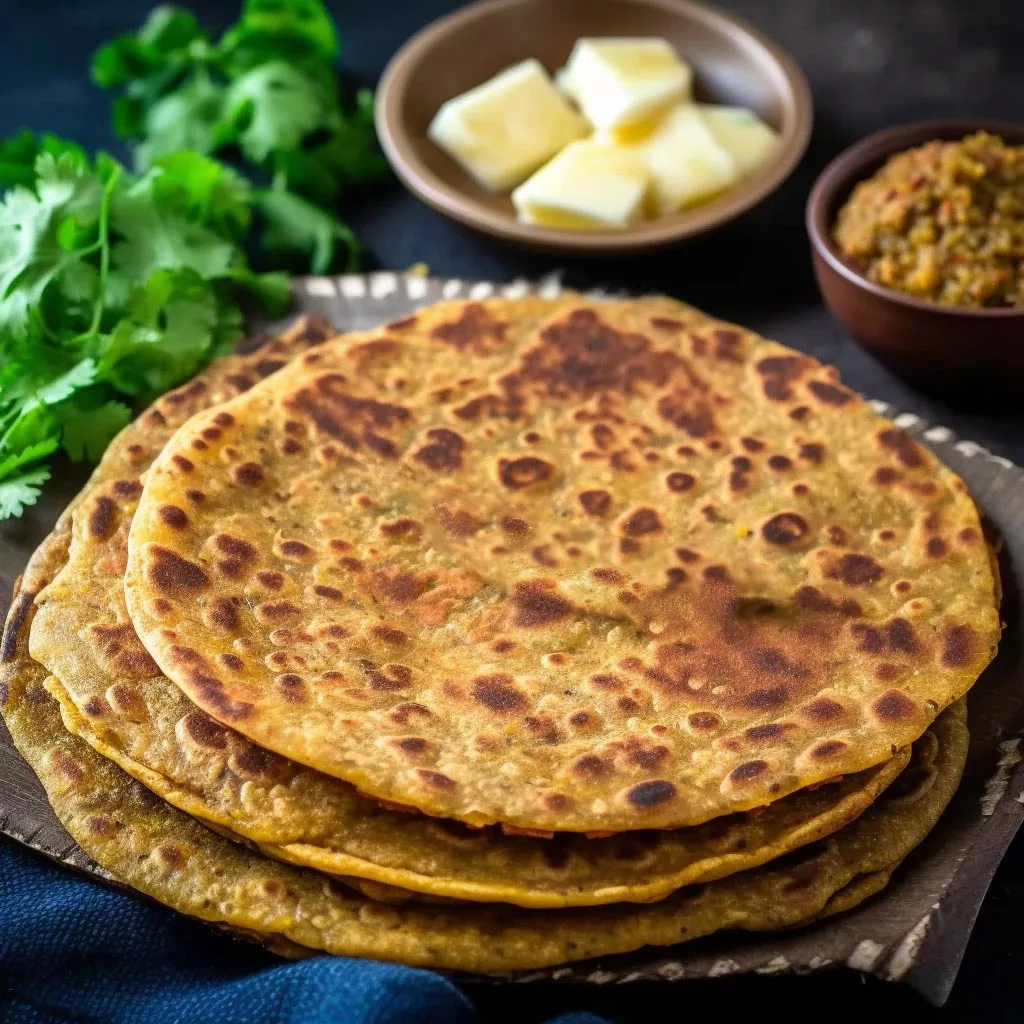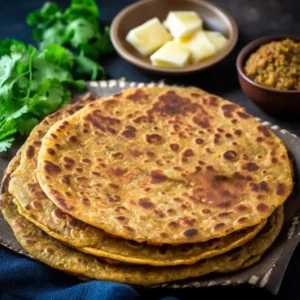
Keema Paratha, a beloved dish originating from the Indian subcontinent, combines the rich flavors of spiced minced meat encased in a crisp, golden-brown dough.
This recipe offers a delightful culinary adventure, blending aromatic spices with tender lamb mince, all wrapped within a soft yet crispy paratha. Perfect for breakfast, lunch, or dinner, keema paratha is a versatile dish that satisfies cravings any time of day.
Crafting this delicacy requires a balance of patience and skill, as we prepare both the dough and the flavorful filling. The dough, made from a blend of plain flour, oil, salt, and sugar, is kneaded to perfection and allowed to rest, ensuring a soft and pliable texture.
Meanwhile, the filling, a savory combination of minced lamb, onions, garlic, and a medley of spices, simmers to aromatic perfection, ready to be enveloped within the dough.
Once assembled, the parathas are cooked on a griddle or frying pan until they develop a beautiful golden hue and a satisfying crispness. The aroma wafting from the kitchen as these parathas sizzle to perfection is enough to entice even the most discerning palate.
While traditionally served with yogurt or chutney, keema paratha pairs well with a variety of condiments, allowing for endless customization to suit individual tastes.
Whether enjoyed as a hearty breakfast, a satisfying lunch, or a flavorful dinner, keema paratha promises to delight with its rich flavors and comforting texture.
Expert Tip: Ensure the dough is kneaded thoroughly to achieve a smooth and elastic texture, resulting in soft and pliable parathas.
Plain Flour: Essential for the dough, plain flour provides the base for the paratha, yielding a soft and pliable texture when kneaded.
Salt: Adds flavor to the dough and balances the overall taste of the paratha.
Sugar: Enhances the flavor of the dough and aids in achieving a golden-brown color during cooking.
Water: Used to bind the dough ingredients together, warm water helps achieve the desired consistency for kneading.
Oil: Both in the dough and for cooking, oil adds moisture and imparts a rich flavor to the paratha.
Minced Meat (Lamb): The star ingredient of the filling, minced lamb offers a hearty and flavorful base for the keema paratha.
Onion, Garlic, Ginger: Aromatic vegetables that add depth and complexity to the filling, enhancing its savory profile.
Spices: A blend of spices that infuses the filling with irresistible flavor and warmth.
Flour (for dusting): Used to prevent sticking and ensure smooth rolling of the dough.
Ghee: Adds a rich, buttery flavor and helps achieve a crispy texture when brushing the cooked parathas.
Expert Tip: Cook the minced meat filling until it is well browned, allowing the flavors to develop fully before assembling the parathas.
Expert Tip: Brush the cooked parathas with ghee immediately after removing them from the griddle or pan to enhance their flavor and achieve a crispy exterior.
Yes, you can substitute lamb with other minced meats such as chicken, beef, or turkey to suit your preferences.
Leftover parathas can be stored in an airtight container in the refrigerator for up to 2-3 days. Reheat them on a skillet or in the microwave before serving.
Yes, you can prepare the dough and filling in advance and store them separately in the refrigerator. When ready to cook, allow the ingredients to come to room temperature before proceeding with the recipe.
Yes, you can freeze cooked parathas. Place them in a single layer on a baking sheet and freeze until firm, then transfer to a freezer bag or container. Reheat from frozen on a skillet until heated through.
You can substitute minced meat with crumbled paneer or mashed potatoes for a vegetarian version of keema paratha. Adjust the spices according to your taste preferences.
Here are some more recipes for you to enjoy! If you my recipes don’t forget to rate and leave a comment.
If you have any recipe suggestions, please do not hesitate to ask me. A great way to stay in contact with me is through Instagram, Facebook, Twitter and YouTube. Don’t forget to tag me @CookwithNabeela in your recipe photos!

Subscribe now to receive my latest recipes directly in your inbox. Stay up-to-date and never miss out!

I love to cook! I want to share with you my favourite, delicious family-friendly recipes. I want to inspire you to create fantastic food for your family every day.
Add your first comment to this post